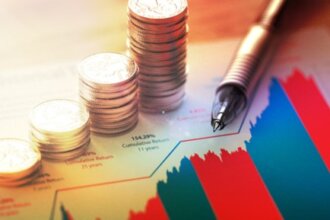Technical indicators are essential for any foreign exchange (forex) currency trading strategy. These are automated calculations that can be applied to any appropriate chart of price movement (or, sometimes, trading volume) to predict price changes in the market. You can use these indicators to inform your trading decisions: when to enter or exit a position, where to set stop losses, and how much to risk.
Indicators read signals and compare them to historical data. They rely on the premise that market performance is governed by human nature, and therefore certain patterns will repeat. Indicators categorize market behavior into patterns and predict when the patterns look likely to recur. These patterns are interpreted as trends, meaning ongoing upward or downward price movements in the immediate future, allowing traders to act accordingly.
Leading and lagging
Before looking at the four main types of forex indicators, we should say that they can all be described as either leading or lagging indicators. Leading indicators predict trends based on recent signals and short-term data but can be unreliable. Lagging indicators use long-term data and signals to confirm trends and are more dependable, but as their name suggests, they usually lag behind the actual movement. When a lagging indicator confirms a trend, it may already be underway, and opportunities may have been missed.
Trend Indicators
The most common technical indicators are those used to show a trend is starting. While you may be able to recognize a trend simply by looking at forex charts yourself, applying an indicator to the charts puts it on a more scientific basis. While they are by no means infallible, trend indicators are more objective and help keep personal emotions from influencing your interpretation.
A lagging trend indicator, a trend confirmation tool, is sometimes considered a separate category. A moving average, which represents the average closing price of a currency pair over a set number of days, could be used as a leading or a lagging indicator, depending on whether it is set to draw on a longer or shorter period.
Momentum Indicators
Once you’ve identified a trend, you’ll want to know whether it’s going to last. Momentum indicators like the Relative Strength Index (RSI) monitor the speed at which prices are changing. This type of indicator is sometimes called overbought/oversold, as it oscillates between those two extreme positions. Neither extreme is favorable for going long: if a currency is overbought and the price has shot up as a result, then a correction is probably imminent, returning the currency to a more realistic value. A similar correction is likely if a currency is oversold, causing the price to plummet.
Volume Indicators
Another way to evaluate the strength of a trend is through a volume indicator that measures the enthusiasm for a particular currency. If the trend is strong, then confidence will be rising, but when the volume of trades levels off, it’s a sign that the trend may be about to break and reverse.
Volume indicators are the least reliable type of indicator as the decentralized nature of forex trading means there is no one ledger where all trades are recorded. You’ll rely on the volume going through your broker or trading platform, hoping this correlates with the bigger picture, which it often does. Remember that you’re looking for patterns rather than the number of trades taking place.
Volatility Indicators
Volatility indicators measure the likelihood of the price changing dramatically over a brief period and the degree to which the price might change. Volatility is unpredictable behavior that doesn’t indicate a trend. These indicators look at closing prices over a set time to see how far they deviate in any direction from the average. Less variance means low volatility and more predictable prices. High volatility means more significant variance and less predictability.
Volatility in either direction can be exploited by traders, though beginners and the risk-averse should avoid volatile situations. Volatility indicators can be used to find the best distance between your entry price and your stop loss. Go wider with high volatility to prevent the risk of being automatically exited from the trade by a “blip” in the price that’s immediately corrected and tighter with low volatility.
Trading indicators are a set of technical tools used by traders to identify potential trading opportunities. The most common trading indicators are moving averages, Bollinger Bands, MACD and RSI.
You should choose the indicators that are best suited for your purpose. Employing too many different kinds can be confusing, and the best advice is to keep things simple by sticking with just two or three at a time.














